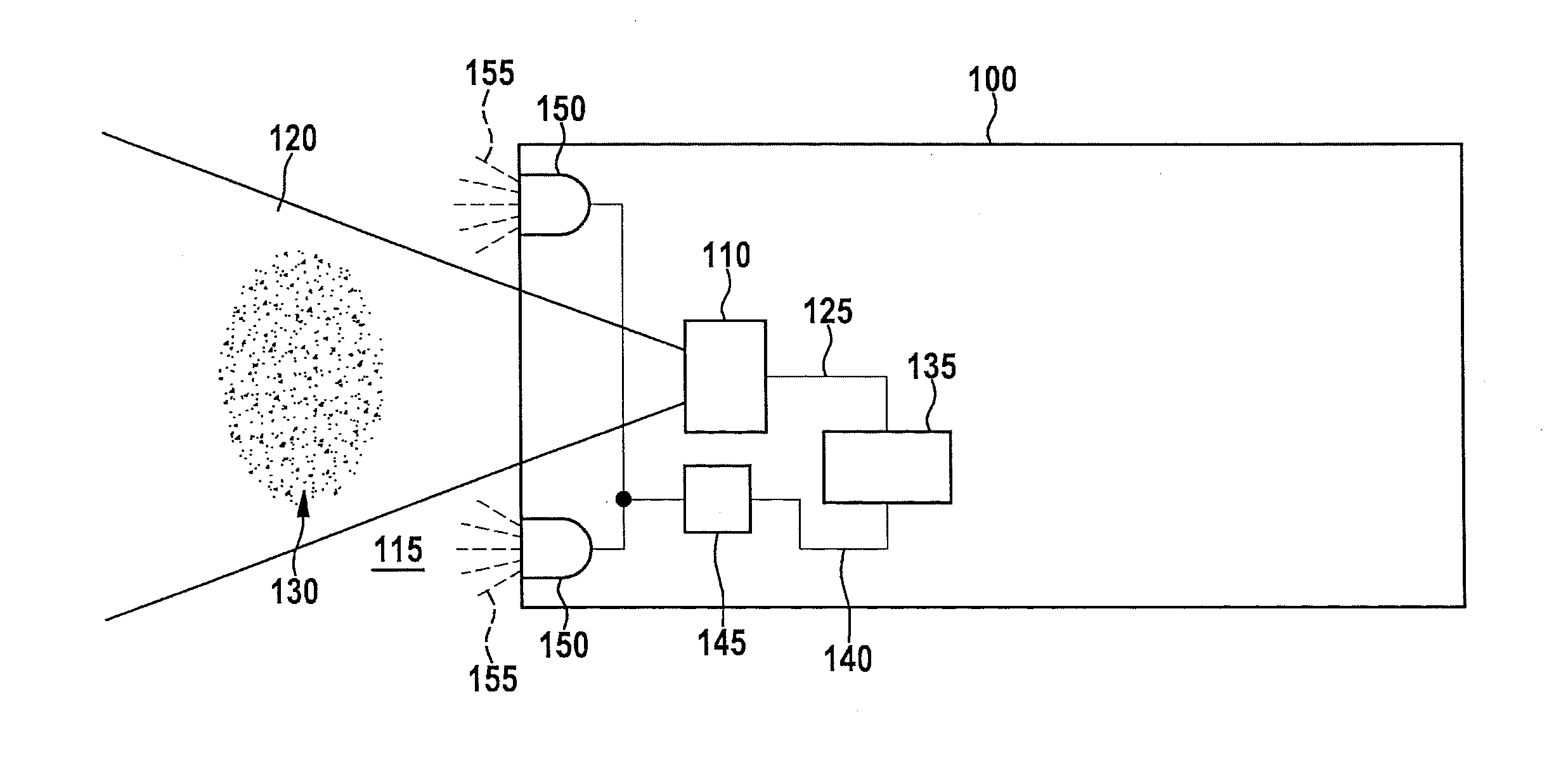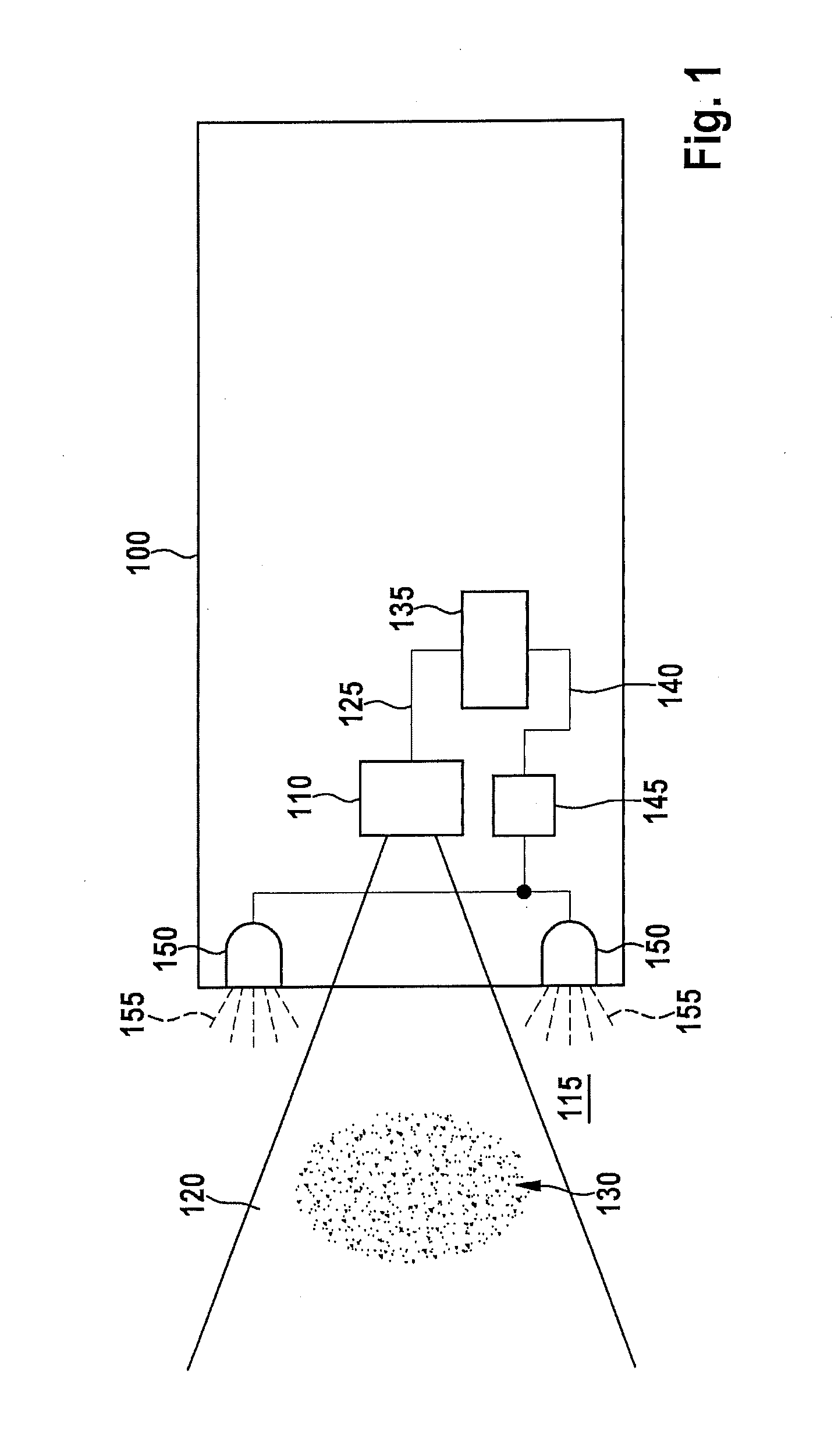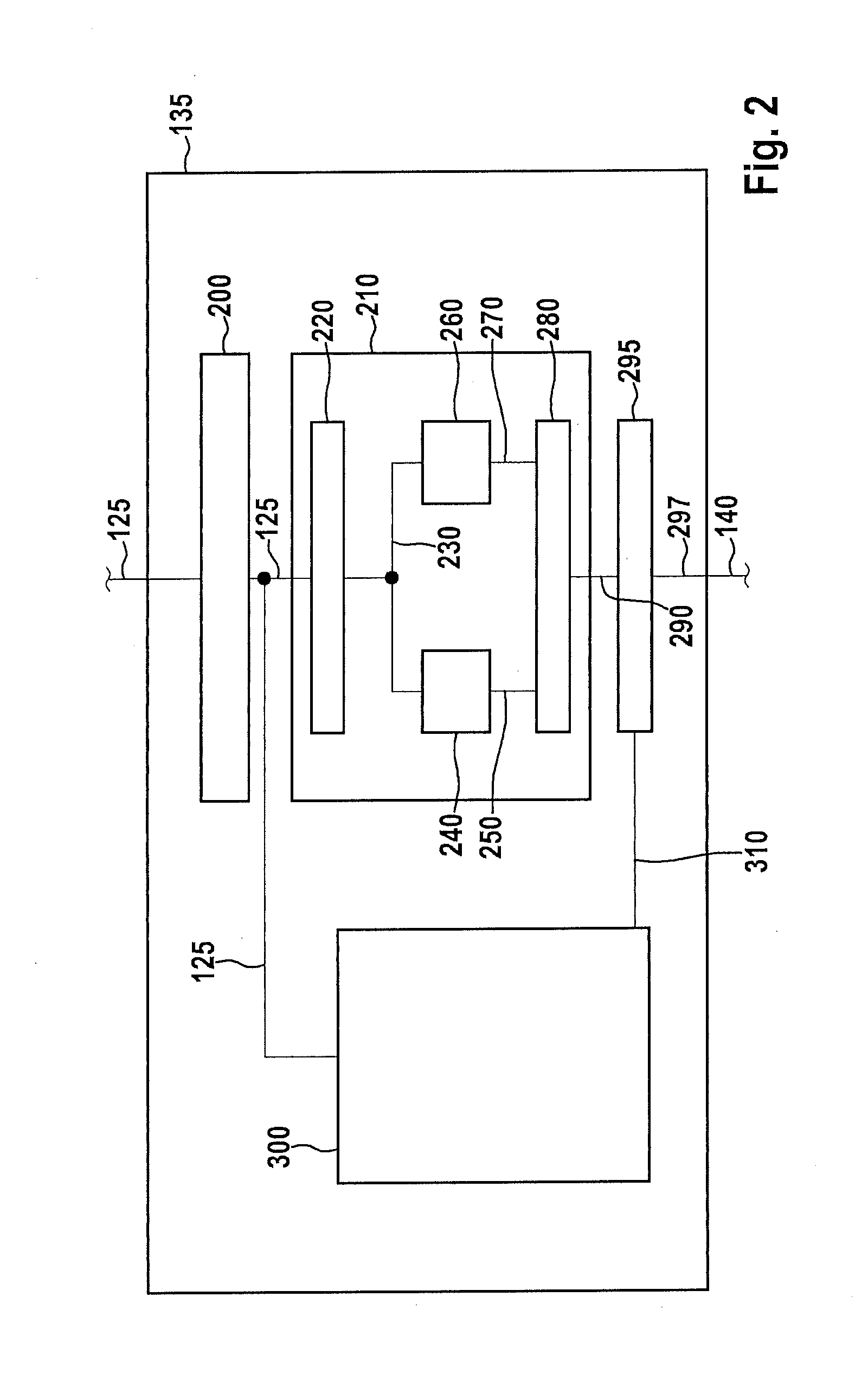Method and apparatus for recognizing an intensity of an aerosol in a field of vision of a camera on a vehicle
a technology of aerosol intensity and field of vision, applied in the field of methods, can solve the problems of dangerous travel situations, inability to recognize meteorological phenomena, and inconvenient driver assistance systems, and achieve the effect of avoiding blinding the driver
- Summary
- Abstract
- Description
- Claims
- Application Information
AI Technical Summary
Benefits of technology
Problems solved by technology
Method used
Image
Examples
Embodiment Construction
[0037]In the following description of preferred exemplary embodiments of the present invention, identical or similar reference characters are used for elements shown in the various Figures and having similar function, and a repeated description of these elements is omitted.
[0038]FIG. 1 shows a schematic diagram of a vehicle 100 containing an exemplary embodiment of the present invention. Vehicle 100 has a camera 110 for acquiring a surrounding environment 115 of the vehicle in a field of view 120 of camera 110, and for providing a corresponding camera image 125. Field of view 120 can in particular be a region in front of vehicle 100. An aerosol 130 whose intensity is to be recognized is contained in field of view 120. Camera image 125 is supplied to a device 135 that is fashioned for recognizing the intensity of the aerosol in the field of view of the camera of the vehicle. The precise functioning of device 135 is explained in more detail in the following. If it is now for example r...
PUM
 Login to View More
Login to View More Abstract
Description
Claims
Application Information
 Login to View More
Login to View More - R&D
- Intellectual Property
- Life Sciences
- Materials
- Tech Scout
- Unparalleled Data Quality
- Higher Quality Content
- 60% Fewer Hallucinations
Browse by: Latest US Patents, China's latest patents, Technical Efficacy Thesaurus, Application Domain, Technology Topic, Popular Technical Reports.
© 2025 PatSnap. All rights reserved.Legal|Privacy policy|Modern Slavery Act Transparency Statement|Sitemap|About US| Contact US: help@patsnap.com



